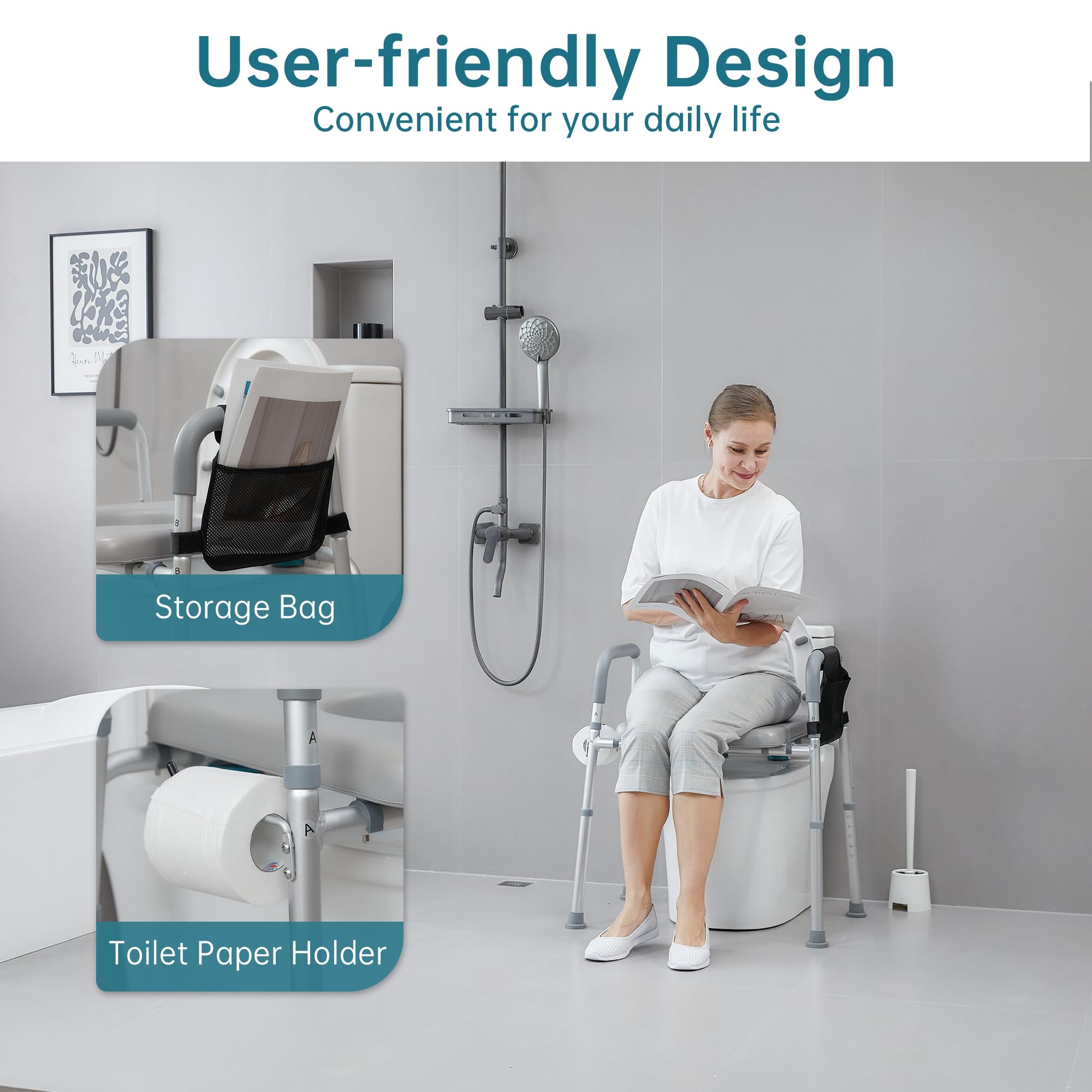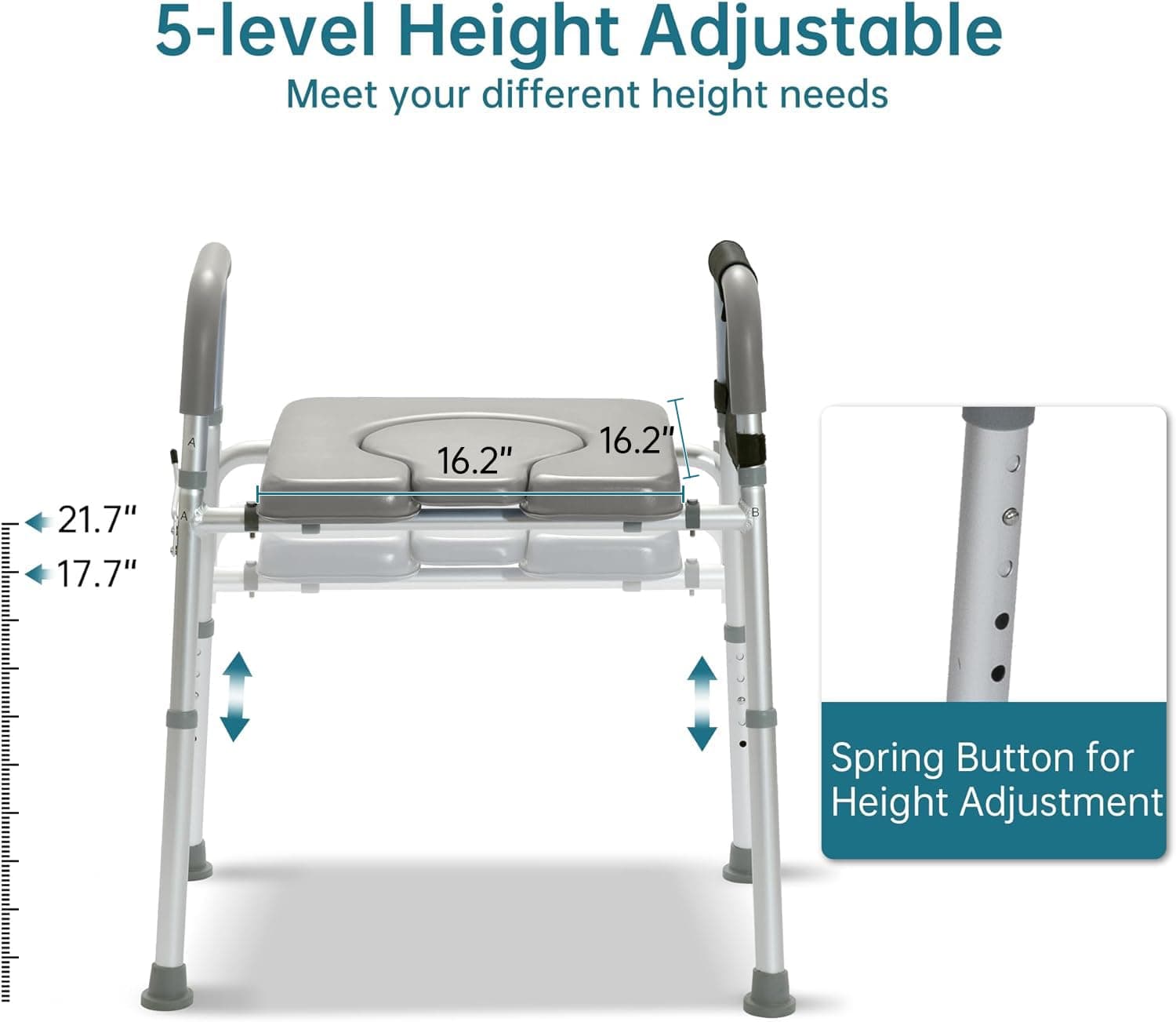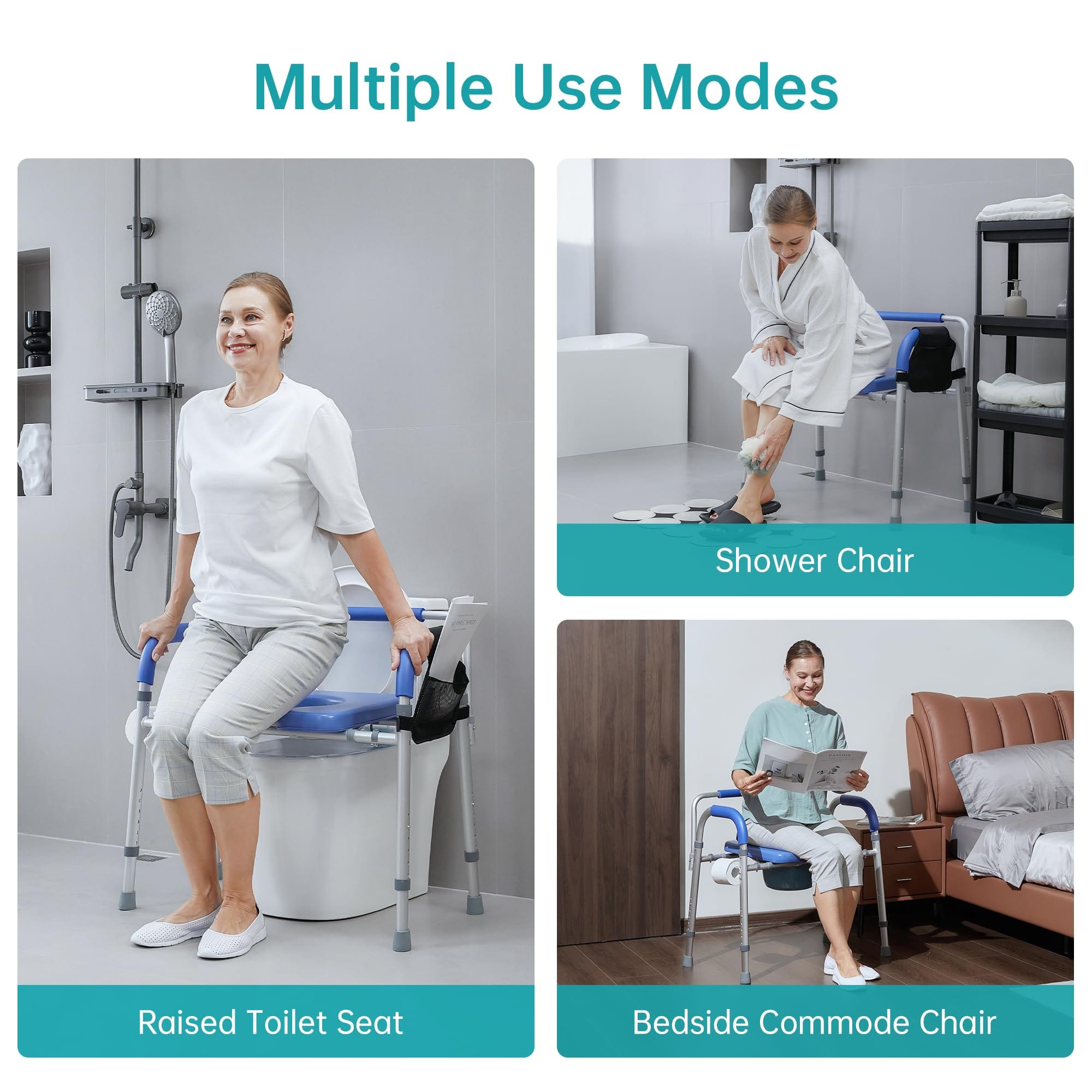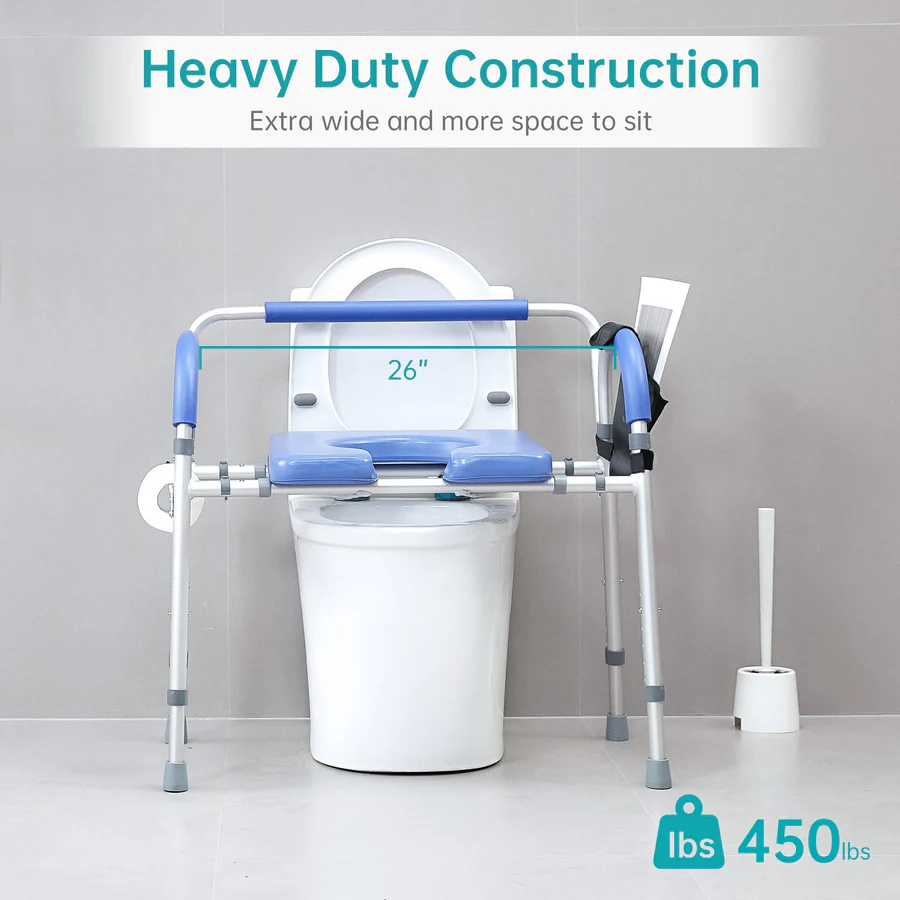Getting up and down from the toilet might seem simple—until it’s not. For a lot of older adults, that everyday motion can become tricky, especially if there’s joint pain, balance issues or recent surgery involved. That’s where toilet seat risers come into play. But the big question is: Are they actually safe for seniors? Short answer? Yes—if you pick the right one and set it up properly.
Why Toilet Seat Risers Are Even a Thing
As people get older, bending their knees and hips to use a low toilet can feel like doing a deep squat at the gym. Not exactly ideal, especially if arthritis, muscle weakness, or limited mobility are in the mix.
Toilet seat risers for senirors simply lift the seat height—usually by 2 to 6 inches—making it way easier to sit down and stand up without straining. It’s a small adjustment that makes a big difference in daily comfort and safety.

So Are They Actually Safe?
✅ Yes—With the Right Setup
When used correctly, a toilet seat riser can reduce the risk of falls, lessen joint pressure, and help seniors stay more independent in the bathroom. It’s all about the right match between the product, the toilet, and the user.
But not all risers are built the same, and not every model will work for every person. A few key things make a huge difference when it comes to safety.
What to Look For in a Safe Toilet Seat Riser
1. Sturdy Attachment
Some toilet risers just sit on top of the toilet bowl. Others lock in place with clamps or screws. If your loved one has trouble balancing, a secured riser is the better bet. Look for models that lock tightly and don’t wiggle when you sit or stand.

2. Handles or Armrests
Many seniors feel way more secure when they have handles to hold onto. Some risers come with built-in arms, while others can be paired with separate toilet safety rails. Either way, extra support = extra confidence.

3. Height That Works
Too high or too low—both can cause problems. The goal is to find a height that makes it easy to sit without “plopping” down and easy to stand without pushing too hard. Most risers add between 2 to 5 inches. Adjustable models are a good choice if you’re unsure.

4. Wide Seat Surface
A wider seat can feel more comfortable and stable, especially for bariatric users or those with balance concerns. It also helps if the riser is contoured to avoid pressure points.
5. Non-Slip Design
Make sure the bottom has non-skid pads or rubber grips. This keeps the riser from shifting, especially on smooth toilet bowls.

When Toilet Risers Might Not Be the Best Fit
Even though they work well for a lot of people, toilet seat risers aren’t ideal in every situation.
Very small bathrooms: If space is tight, a riser with arms might feel bulky.
Cognitive issues: Someone with dementia might get confused by the new setup.
Vision impairments: Bright white on white can be hard to see—look for risers with contrast edges or pair with a dark toilet lid cover.
In these cases, alternatives like a commode chair or a toilet safety frame with legs might be safer options.

Extra Tips for Safe Use
Here’s how to make sure your riser setup actually helps—without causing new problems.
- Check the fit. Not all risers work with both round and elongated toilets. Double-check your toilet shape before buying.
- Secure it properly. Follow the manufacturer’s instructions. If it’s loose, it’s not safe.
- Add grab bars nearby. If the bathroom wall allows it, install a grab bar for extra help.
- Keep it clean. Raised seats can trap spills or odors if not cleaned regularly. Wipe down with gentle disinfectant.
- Recheck after a while. Over time, clamps may loosen or rubber parts may wear out. Do a quick monthly check-up.
Toilet seat risers are a simple solution that can make a world of difference for older adults—but safety depends on getting the right fit, setup, and support. For many seniors, it’s a small upgrade that keeps bathroom routines easier, safer, and way less stressful.
If you’re shopping for one, consider a model that includes armrests, offers a secure locking mechanism, and works with the toilet you have at home. And don’t forget—comfort matters just as much as safety. If it feels awkward, people are less likely to use it.
A good toilet seat riser can give seniors the confidence to manage bathroom tasks on their own—and that kind of independence is always worth it.
